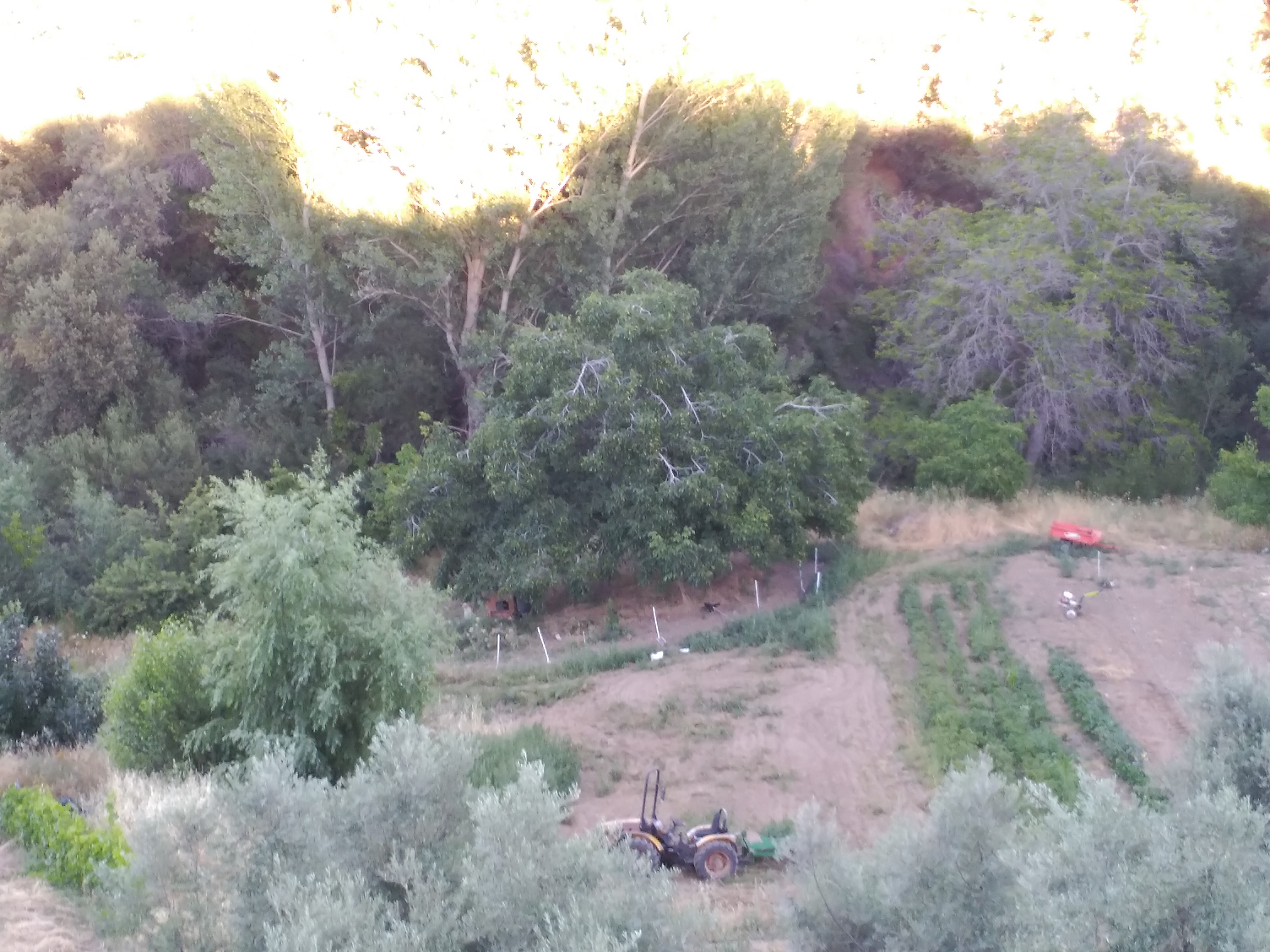This year I have put three of the hens in a pen in the bottom field. The idea was that this would be their final resting area but I’ve since changed my mind. Two of the hens are from the eggs that I incubated by crossing our hens with the neighbour’s rooster and I’ve become attached to them so they’ve been granted a wildcard to old age.
The white posts mark the borders of the pen and you can see two of the black hens together. The lines of vegetables to the right of the tractor are potatoes.
In their summer residence, they are protected by an electric fence surrounding a walnut tree and have free range of the first hen house that John built for them. Although they were reluctant to venture in at first, they are now happy to lay their eggs in one of the partitions. They tend to sleep, however, on some of the branches of the tree above it. This is good news and makes me happy. The other day on our morning walk to Marchalejo, we saw a pack of three foxes and then a single fox so it is good that we have the three types of fox-protection: electrocution, canine and flight.








